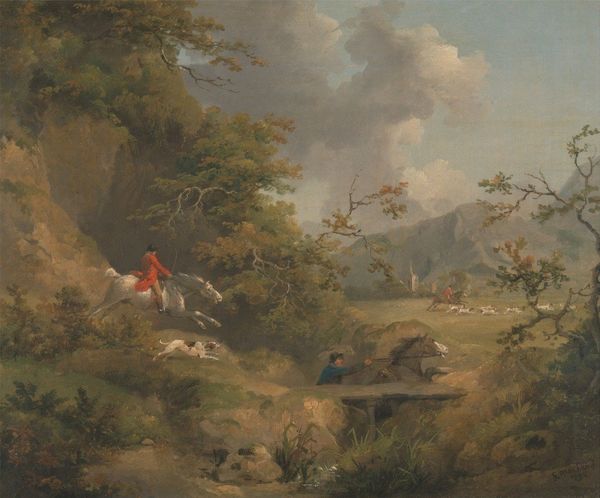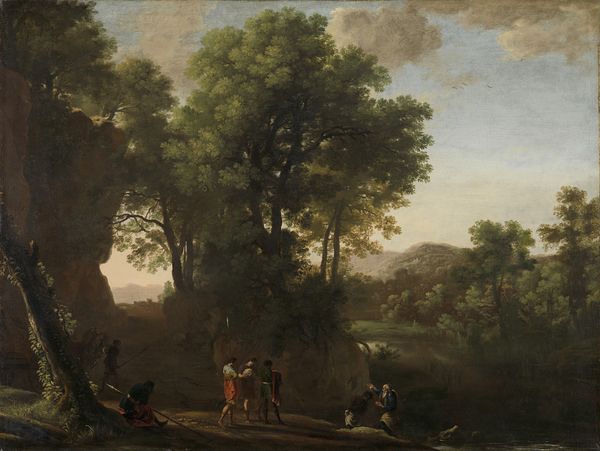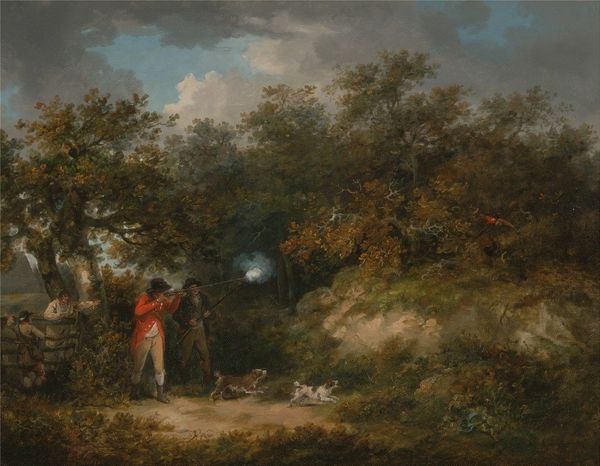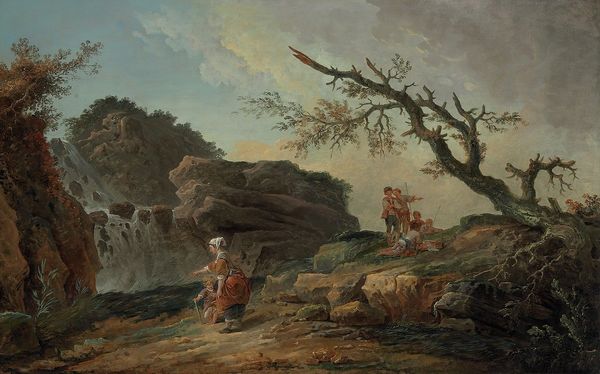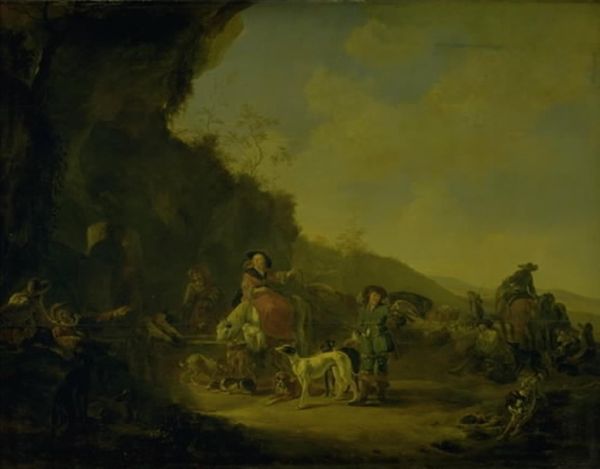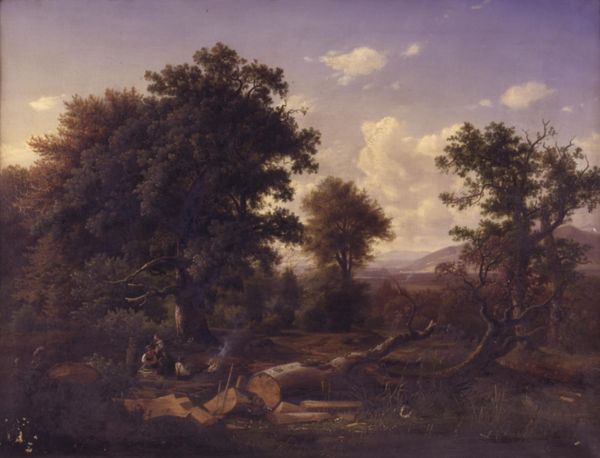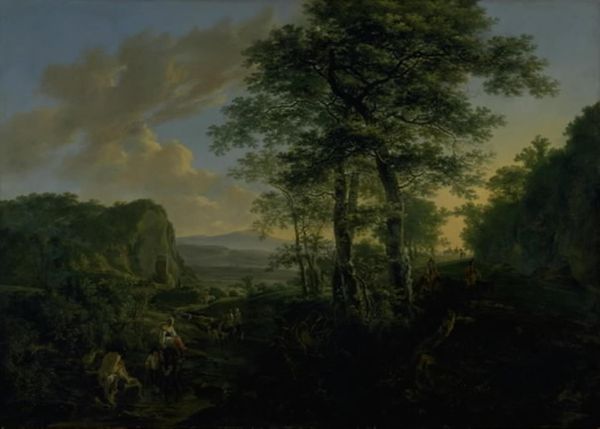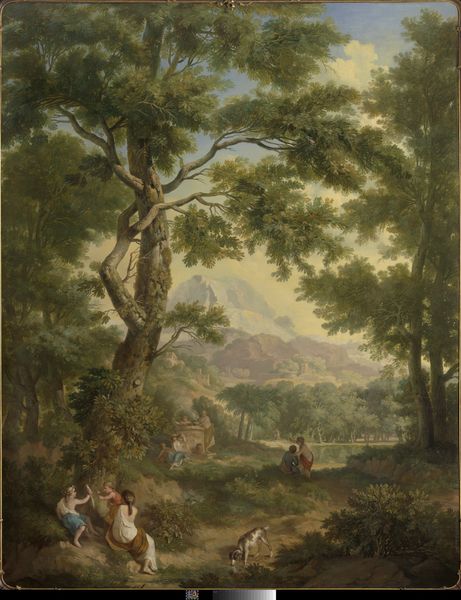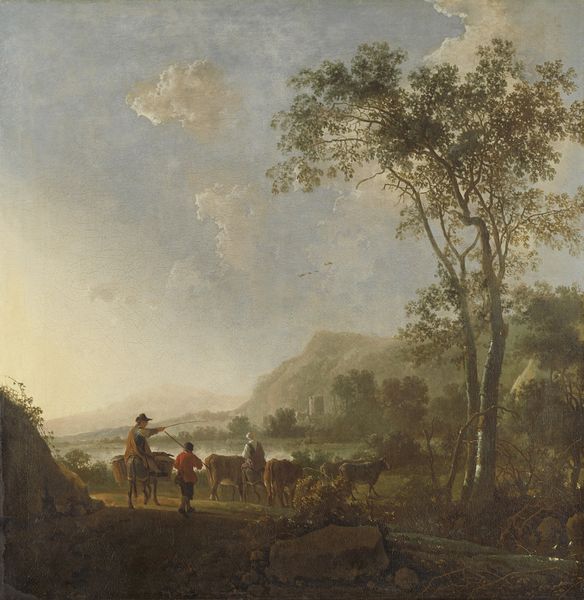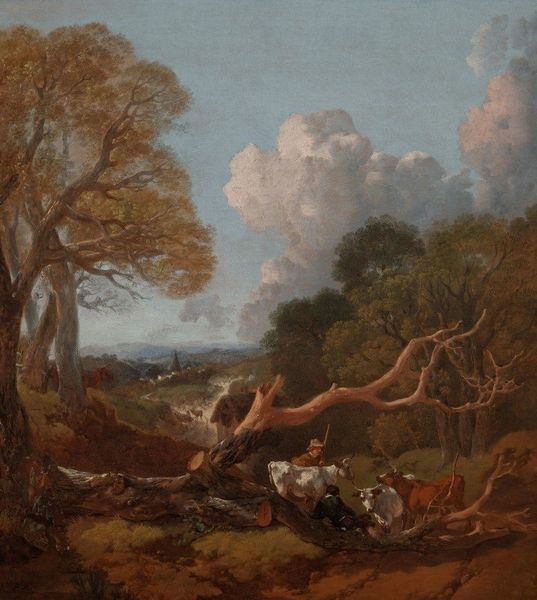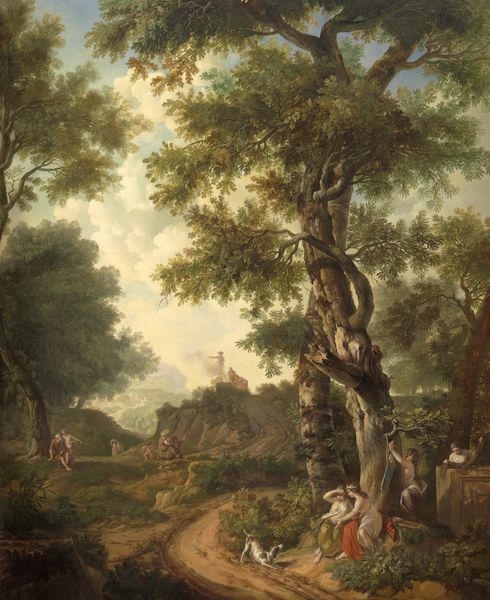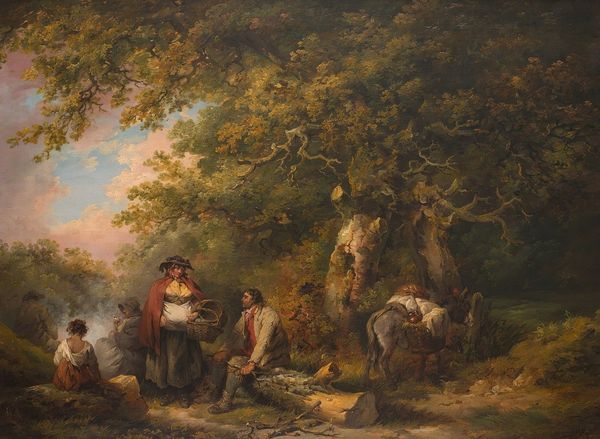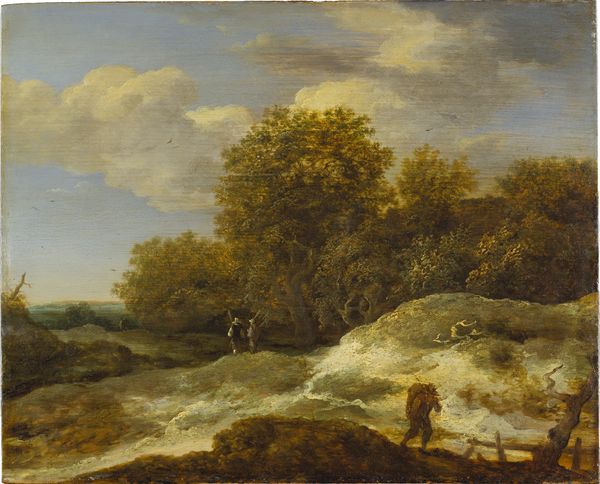
Dimensions: support: 864 x 1168 mm frame: 1112 x 1410 x 140 mm
Copyright: CC-BY-NC-ND 4.0 DEED, Photo: Tate
Editor: This is "Rabbiting" by George Morland. The activity is quite clear, but there's also this undeniable sense of class disparity. What's your perspective on how this work speaks to its time? Curator: It's fascinating how Morland, painting around the turn of the 19th century, captures this moment of societal tension. Consider the Enclosure Acts, displacing rural communities. Does this scene romanticize or critique the landed gentry's pursuits? Editor: That's a great point. I hadn't considered the impact of those acts directly in this image. I was focused on the figures. Curator: And what do you read in the composition, especially in the contrast between the figures in the foreground and the implied vastness of the landscape? Editor: Perhaps it is a commentary on man's encroachment on the natural world. I will have to rethink my initial assumptions about this one. Curator: Precisely! It invites us to question the power dynamics at play within seemingly bucolic scenes. It's a mirror reflecting ongoing struggles for land, resources, and representation.
Comments
Join the conversation
Join millions of artists and users on Artera today and experience the ultimate creative platform.
tate 6 months ago
⋮
The rabbit warren was a staple part of the rural economy, and an important feature on most country estates. This scene shows the tense moment as the country folk wait for the rabbits to emerge from a burrow, having been flushed out by ferrets; the eager lurcher is poised for the chase that will ensue.Morland is perhaps best known as a painter of picturesque scenes from everyday rural life. His genre subjects occasionally have a sporting theme, yet he rarely attempted the conventional ones of hunting or horse-racing. This is somewhat surprising as it is known that Morland himself enjoyed riding to hounds and on several instances rode as a gentleman jockey. Gallery label, August 2004
